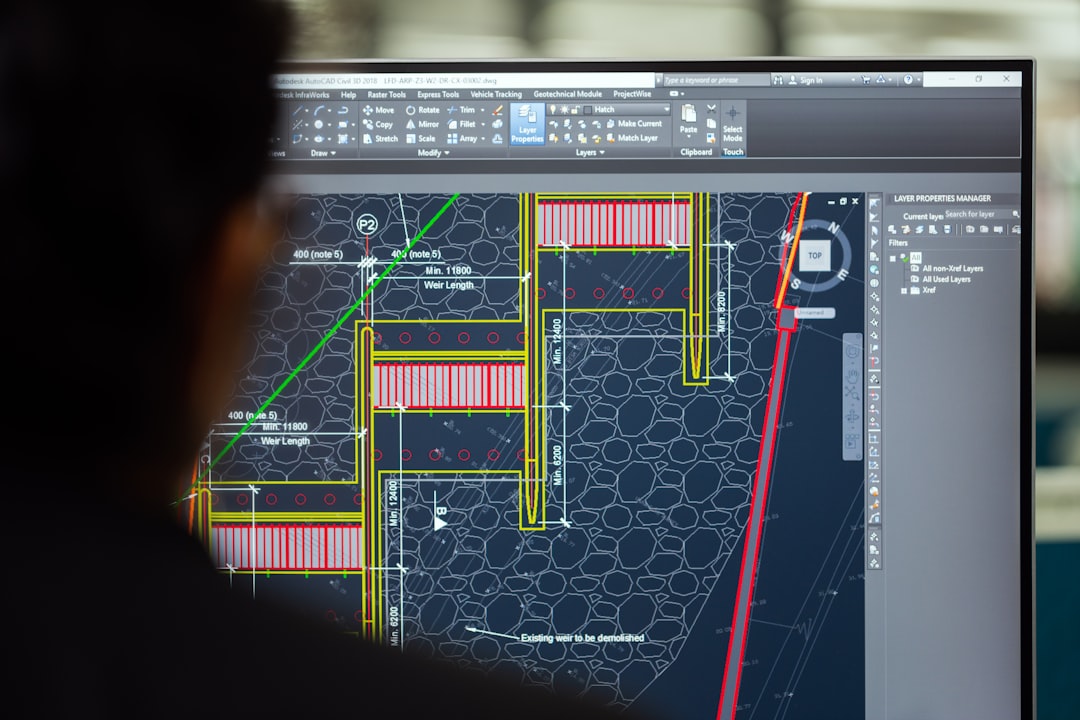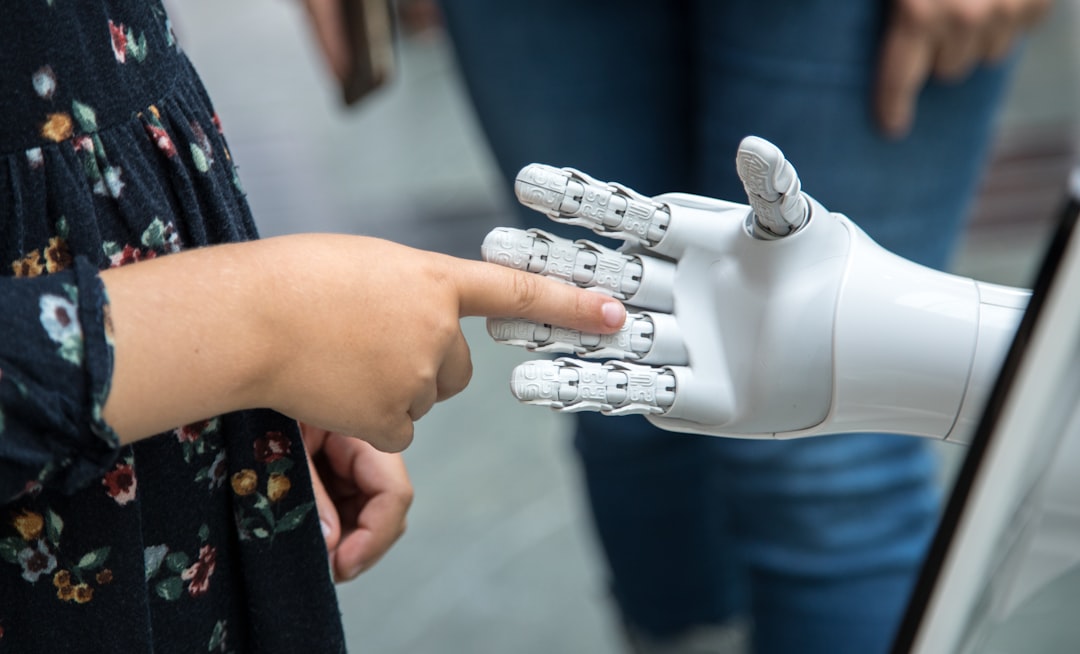Introduction
Artificial Intelligence (AI) is becoming a valuable ally for engineering educators and researchers. Rather than focusing on theory or ethics, this overview highlights practical applications of AI in everyday teaching and research tasks. University-level engineering professors can leverage AI tools to automate routine work, personalize learning, and accelerate research breakthroughs. The following sections outline how AI is used for teaching (grading, content creation, personalized learning, lab simulations, student engagement) and for research (data analysis, simulation/modeling, literature review, writing support, workflow optimization), with real-world examples and platforms.
AI in Teaching
AI technologies offer tangible benefits in the classroom by reducing instructors’ workloads and enhancing student learning experiences. From grading automation to intelligent tutoring, professors can adopt these tools to improve efficiency and student outcomes. Key applications include:
AI-Assisted Grading
-
Automated answer grouping: Tools like Gradescope use AI to cluster similar responses so that instructors can grade one representative answer and apply the result to all in the group. This significantly speeds up grading for large classes and ensures consistency.
-
Consistent rubrics and feedback: Gradescope’s AI also helps apply grading rubrics uniformly and even suggests feedback for common errors. For example, it can flag miscalculations in a math solution and prompt a specific feedback comment, reducing manual review time.
-
Efficiency and scale: By automating repetitive grading tasks, AI-based grading platforms allow educators to handle large courses more easily. Studies note improvements in grading efficiency and more time freed for one-on-one student interaction.
AI for Content Generation
-
Lesson and material creation: Generative AI tools assist in producing teaching materials rapidly. For instance, OpenAI’s ChatGPT can draft quiz questions, example problems, or even explanations of complex concepts on demand. OpenAI has released a Teaching with AI guide suggesting prompts for using ChatGPT in class. Similarly, platforms like Canva’s Magic Write generate outlines, presentations, or worksheets based on a topic prompt, helping instructors brainstorm and prepare content faster.
-
Visual and multimedia content: AI can create engaging visuals or slides. Tools such as Slidesgo’s AI Presentation Maker auto-generate slide decks when given a topic and tone, saving time in creating lecture presentations. Some educators also use AI text-to-image generators to produce custom diagrams or illustrations for class.
-
Coding examples and solutions: In programming-heavy courses, AI coding assistants (like GitHub Copilot or MATLAB Copilot) help generate example code or solutions. These generative AI models can suggest code snippets and even explain code, aiding instructors in preparing demo programs or debugging student code.
AI-Powered Personalized Learning
-
Adaptive practice and quizzes: AI enables learning platforms to adjust to each student’s performance. For example, Quizizz (an online quiz tool) now uses AI to dynamically modify question difficulty and provide individualized question pathways based on a student’s responses. This creates a personalized learning path, giving extra practice on weaker areas and accelerating through topics the student has mastered.
-
Intelligent tutoring systems: AI-driven tutors can monitor student progress and tailor instruction. Experimental systems use reinforcement learning algorithms to gauge understanding, identify knowledge gaps, and fine-tune their teaching responses for each student. In practice, this could mean an AI tutor that detects when an engineering student is struggling with a concept (e.g. circuit analysis) and then offers easier explanations or prerequisite refreshers before advancing.
-
Differentiated content: Some AI tools (e.g., Eduaide.AI or Khan Academy’s Khanmigo) can adjust content complexity and style for individual learners. They might simplify a technical explanation for beginners or provide extra challenges to advanced students, thereby personalizing the learning experience to maintain optimal engagement for everyone.
AI Simulations and Virtual Labs
-
Digital twin simulations: AI enhances computer-based lab simulations by making them more realistic and responsive. Modern digital twin tools use AI models to replicate physical systems (machines, circuits, chemical processes) with high fidelity. An AI-assisted digital twin can simulate an engineering experiment under various conditions, allowing students to explore “what-if” scenarios safely. For instance, an AI-driven simulator in a control systems course might automatically adjust parameters and show outcomes in real time, helping students visualize how a design change affects system stability.
-
Realistic and dynamic modeling: Incorporating AI into simulations helps capture complex, real-world effects. AI algorithms can learn from real data to model phenomena that are hard to derive analytically, making virtual labs closer to hands-on experiments. Students can catch design flaws or safety issues in a virtual environment before physical prototyping, leading to more robust engineering designs.
-
AI in lab management: Beyond simulations, AI also streamlines lab operations. Some lab software can automate equipment setup and data collection. For example, AI-enhanced lab systems might auto-configure test instruments for each lab session, or log experimental data and graph results instantly. This automation frees instructors to focus on mentoring students rather than on administrative setup.
AI to Boost Student Engagement
-
AI teaching assistants (chatbots): AI chatbots serve as 24/7 teaching assistants, answering student questions and sending reminders. A notable example is TA Pounce at Georgia State University – an AI TA that communicated with students via text. Students with access to this chatbot earned higher grades and had better course completion rates in large lecture classes. The bot would remind students about upcoming deadlines, check in on their progress, and guide them to resources, much like a human TA. This kind of AI assistant ensures no student question goes unanswered, especially in courses with hundreds of students.
-
Timely, personalized outreach: AI can identify disengaged or struggling students by analyzing interaction data (quiz performance, logins, etc.) and then proactively engage them. For instance, an AI system might notice a student hasn’t logged into the course site recently and send a nudge or offer help. TA Pounce demonstrated this approach by messaging students regularly about class performance and study tips, which helped students (especially those from underrepresented groups) feel supported and stay on track.
-
Interactive learning companions: Some platforms offer AI-driven discussion and feedback to keep students involved. For example, chat-based tutors can pose questions during study to prompt critical thinking, or role-play as a debate opponent on a technical topic. By engaging students in dialogue or problem-solving, AI companions make learning more interactive and less passive, which can increase motivation and deepen understanding.
Table: AI Tools for Teaching Tasks
| Teaching Task | Example AI Tool(s) | How It’s Used in Education |
|---|---|---|
| Grading | Gradescope | Uses AI to group similar answers and apply rubrics for faster, more consistent grading. |
| Content Generation | ChatGPT (OpenAI),Canva Magic Write | Generates quiz questions, explanations, lesson outlines, and even slide decks based on prompts, saving prep time. |
| Personalized Learning | Quizizz (AI adaptive quizzes),Khanmigo | Adjusts question difficulty and provides tailored feedback or hints in real-time to each learner, creating a customized learning path. |
| Lab Simulations | AI-driven Digital Twins,MATLAB/Simulink AI | Creates realistic virtual lab experiments (e.g., simulating a circuit or mechanical system) that respond dynamically to student input, allowing safe, repeatable exploration. |
| Student Engagement | TA Pounce (AI chatbot TA),Piazza chatbots | Chatbot assistants answer FAQs, send reminders, and coach students through course material, improving engagement and course success rates. |
AI in Research
In engineering research, AI acts as a powerful assistant throughout the research lifecycle. It enables researchers to analyze data more deeply, explore complex models, review literature efficiently, and even streamline writing and daily workflows. By offloading labor-intensive tasks to AI, professors and research teams can focus more on innovation and critical thinking. Key research applications include:
AI for Data Analysis and Interpretation
-
Pattern recognition in big data: Engineers often collect massive datasets (from simulations, experiments, or sensors). Machine learning algorithms can sift through these data to find patterns, anomalies, or correlations that humans might miss. For example, AI models can analyze vibration data from machinery to detect early signs of failure or scan thousands of material microscopy images to spot novel features. AI-powered analysis tools can handle data at scales and speeds beyond manual methods.
-
Automated data processing: AI integration in tools like MATLAB or Python libraries (TensorFlow, scikit-learn) allows for automated cleaning, filtering, and visualization of data. Researchers can train AI models on experimental data to make predictions or classify results – effectively turning raw data into actionable insights. According to industry reports, AI-driven test software can automatically execute experiments, aggregate results, and generate graphs of the findings, greatly accelerating the analysis phase.
-
Interpreting complex results: Some advanced AI systems (like deep learning models) can model non-linear relationships in data, helping interpret complex phenomena (e.g., fluid dynamics outcomes or climate patterns). While the models themselves are complex, tools are emerging to provide explainable AI features – highlighting which variables are most influential – thus aiding researchers in understanding the “why” behind patterns that the AI finds.
AI-Enhanced Simulation and Modeling
-
Surrogate models for simulation: AI is used to build fast approximate models (surrogates) of expensive engineering simulations. For instance, instead of running a computationally heavy finite element analysis for every design iteration, researchers can train a neural network on a few simulations to predict outcomes almost instantly. This speeds up design optimization dramatically. Physics-informed neural networks (PINNs) are one example, embedding physical laws into AI models to simulate systems (like heat transfer or fluid flow) with fewer computational resources.
-
Digital twins in research: Similar to teaching labs, researchers employ AI-enabled digital twins of complex systems (power grids, aircraft engines, smart cities) to conduct experiments in silico. AI makes these simulations more accurate by continuously adjusting the model based on real-world data. For example, an AI-driven model of a bridge can simulate stress responses to thousands of earthquake patterns, helping civil engineers test structural resilience beyond what’s feasible with physical experiments. Researchers can uncover failure modes or optimizations early in the design process.
-
Generative design and optimization: AI algorithms (like genetic algorithms or generative adversarial networks) can automatically propose design alternatives under given constraints. In mechanical and aerospace engineering, generative design AI explores innovative shapes and materials for components that a human might not think of, often leading to lighter or stronger solutions. These AI-suggested designs are then validated via simulation or prototyping, merging AI creativity with engineering judgment in the modeling process.
Automated Literature Review and Analysis
-
AI research assistants: Keeping up with literature is easier with AI. Tools like Elicit leverage language models to find relevant papers and even summarize their findings. Researchers can ask a question (e.g., “What are recent advancements in battery nanomaterials?”), and Elicit will retrieve pertinent publications and generate summaries of the evidence. This speeds up literature reviews by highlighting key results from hundreds of papers in a fraction of the time. Over 2 million researchers have used Elicit to accelerate literature searches and even assist in systematic reviews.
-
Smart citation analysis: Scite is an AI-driven literature tool that goes beyond counting citations by classifying the context of those citations. It has analyzed over 1.2 billion citation statements, identifying whether each citation supports or contradicts the referenced work. For example, when reading an article, a researcher can use Scite to see if a cited claim was generally supported by subsequent studies or challenged by them. This helps in quickly assessing the reliability of sources. The tool’s Smart Citations categorize references as supporting, contrasting, or just mentioning the original work, making it easier to evaluate scientific consensus at a glance.
-
Literature mapping and recommendations: Other AI tools (Semantic Scholar’s recommender, Connected Papers, etc.) use machine learning to map relationships between papers. They can suggest relevant articles that a manual search might overlook by recognizing semantic similarities. Additionally, AI summarization (as seen in Semantic Scholar’s TL;DR feature) provides one-paragraph summaries of papers, allowing researchers to skim large numbers of publications efficiently. Such tools optimize the literature review phase, ensuring scholars stay up-to-date with far less effort.
AI Support in Writing and Proposal Development
-
Drafting and brainstorming: Large language models like ChatGPT serve as writing aides for academic writing. Researchers use ChatGPT or similar models to brainstorm ideas, generate outlines, or even write first drafts of sections of papers and grant proposals. For example, a professor can ask ChatGPT to generate a paragraph explaining the motivation for a research problem, then refine it as needed. This can overcome writer’s block and provide a starting structure that the researcher polishes with their expertise.
-
Editing and proofreading: AI writing assistants tailored to academic language, such as Paperpal or Grammarly, help refine drafts. These tools can suggest clearer wording, fix grammar and syntax, and ensure the text meets formal academic standards. One PhD student noted that Paperpal is indispensable for proofreading manuscripts and checking they meet publishing standards. In grant proposals, where clarity and conciseness are crucial, such AI feedback can significantly improve the quality of the text before submission.
-
Citation management and fact-checking: AI can assist in inserting citations and verifying claims. For instance, tools like Scite (with its Reference Check) allow authors to upload a draft and automatically identify if any cited sources have been retracted or contradicted by later work. This ensures the proposal or paper only cites robust, up-to-date evidence. Similarly, some AI plugins can suggest references for a given sentence or flag unsupported statements, acting as an intelligent editor that maintains the credibility of the writing.
Research Workflow Optimization
-
AI-assisted coding and debugging: Research often involves programming (data analysis scripts, simulation code, etc.). AI code assistants like MATLAB Copilot and GitHub Copilot can generate code snippets, suggest functions, and even identify bugs, significantly accelerating coding tasks. MATLAB Copilot, for example, uses generative AI to help researchers and students write and refine MATLAB code – automating tedious portions and boosting productivity. This means a research team can prototype an algorithm or process data faster, with the AI handling routine code while the human focuses on logic and interpretation.
-
Automating routine tasks: Many day-to-day research chores can be automated with AI. For example, scheduling experiments or managing laboratory equipment can be delegated to smart software. In lab settings, AI-driven automation systems can schedule instrument time, track experiment progress, and even conduct standardized procedures (like running a batch of materials tests overnight) without constant human oversight. By offloading administrative and repetitive tasks – data entry, meeting transcription, project management updates – researchers can devote more time to creative problem-solving. Project management tools now incorporate AI to predict project timelines or optimize resource allocation based on past data, which helps in planning research projects more efficiently.
-
Collaboration and knowledge management: AI also helps in organizing and retrieving information within a research group. Intelligent search engines (using NLP) can instantly find relevant reports or code in a lab’s knowledge base. Some teams use AI chatbots trained on their internal documents to answer members’ questions (e.g., “Where is the procedure for calibrating sensor X?”). This reduces time wasted looking for information. Moreover, AI-powered transcription and translation services can convert meetings or seminars into searchable text, ensuring that knowledge is captured and shareable. All these enhancements streamline the research workflow, allowing teams to operate with efficiency once only possible in well-staffed projects.
Table: AI Tools for Research Tasks
| Research Task | Example AI Tool(s) | Application and Benefits |
|---|---|---|
| Data Analysis | MATLAB/Python ML toolkits,AI Test Analytics | Machine learning algorithms analyze large datasets for patterns and anomalies, automating data processing and visualizing results (e.g., AI finds key trends in experimental data). |
| Simulation & Modeling | AI-driven Digital Twins,Surrogate Models (PINNs) | AI models simulate complex systems or physical processes faster than traditional methods, enabling extensive what-if experiments and early detection of design issues. |
| Literature Review | Elicit, Scite, Semantic Scholar AI | NLP-based assistants find relevant papers, summarize findings, and analyze citation contexts, accelerating reviews and helping researchers stay up-to-date. |
| Writing & Proposals | ChatGPT, Paperpal, Grammarly | Generative AI helps draft and polish research papers or grant proposals, suggesting improvements in clarity and style and even recommending or checking citations. |
| Workflow Optimization | MATLAB Copilot, GitHub Copilot,AI Lab Automation | AI automates coding, debugging, and routine lab tasks. Coding copilots generate boilerplate code and catch errors, while smart lab systems schedule experiments or manage data logs, freeing researchers to focus on innovative work. |
Conclusion
AI is rapidly becoming an integral part of engineering teaching and research, offering practical enhancements that save time and improve outcomes. By incorporating AI tools – from grading assistants and adaptive learning platforms in the classroom to intelligent literature and coding assistants in the lab – engineering educators can personalize instruction and streamline their workflow, while researchers can accelerate discoveries and reduce drudgery. It’s important for professors to stay updated on these tools and experiment with them in their own courses and projects. In doing so, they not only increase their productivity but also prepare students for an AI-enhanced engineering workforce. Embracing AI in pragmatic ways allows academia to focus on what humans do best: creativity, critical thinking, and innovation, supported by the efficiency of intelligent machines.










0 Comments